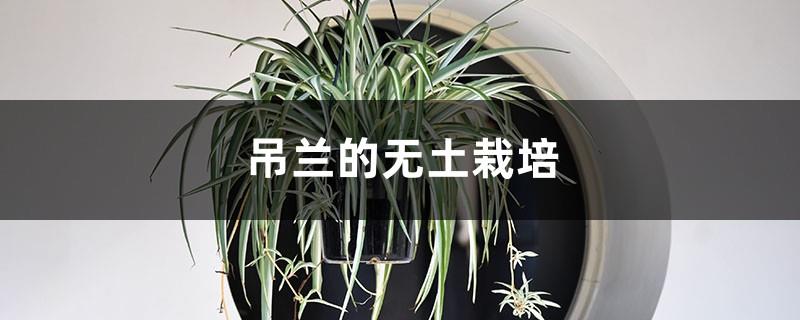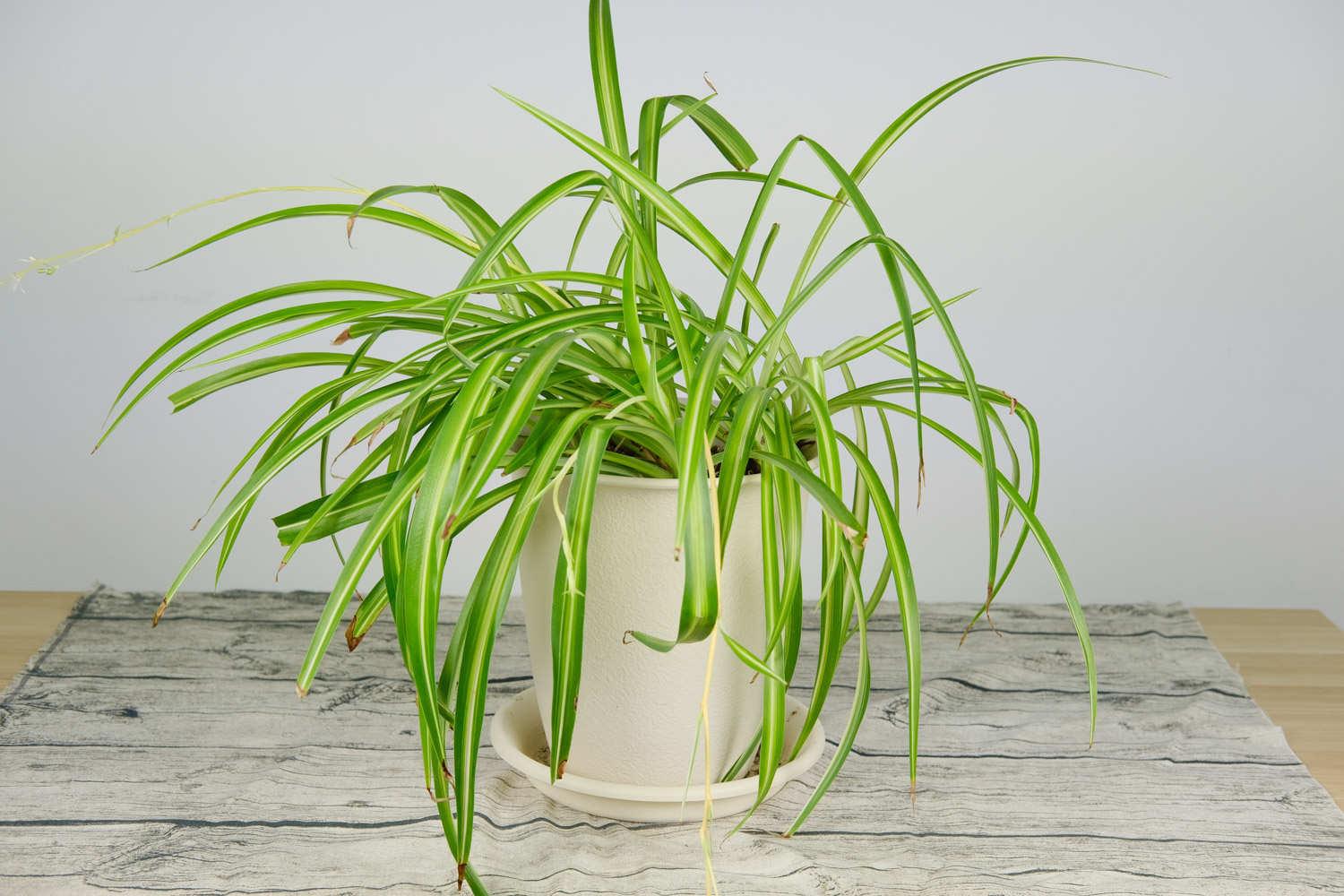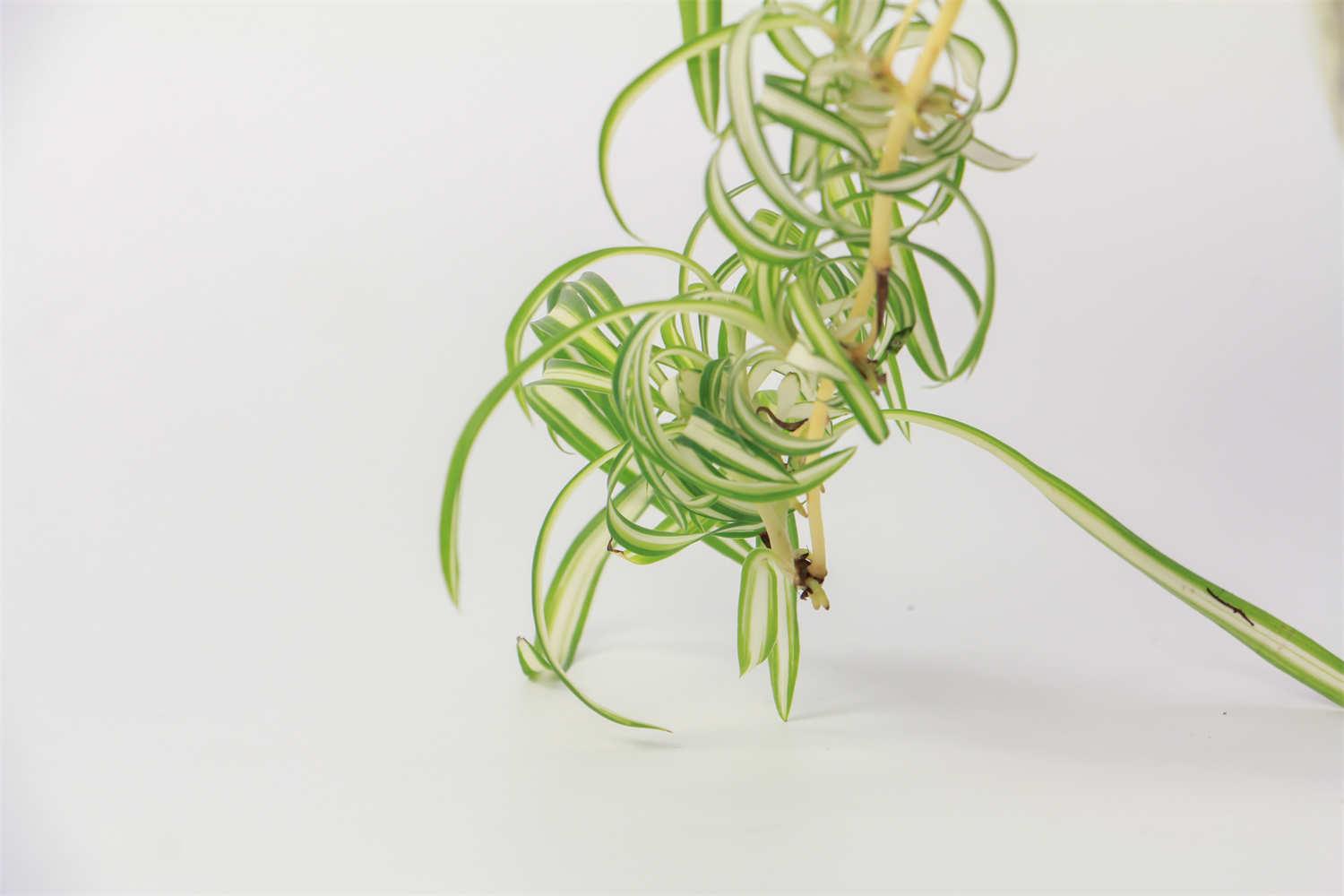Soilless Cultivation of Chlorophytum
Last Update :2024.11.13
Article Catalog
Methods for soilless cultivation of spider plants
Chlorophytum soilless culture maintenance and management
Chlorophytum has an elegant and unique shape, unique and colorful, and is deeply loved by people. In addition to traditional soil cultivation, it can also be used for soilless cultivation, and has gradually replaced traditional cultivation methods. So what are the steps for soilless cultivation of spider plants, and what should you pay attention to?

What is soilless culture
What is soilless culture
Soilless culture literally means growing plants without soil, but with other things instead of soil. Generally, hydroponics, mist cultivation, and substrate cultivation are used. Some people may ask, without soil, how can plants have sufficient nutrients? Don’t worry, we can use artificially prepared culture medium to supply plant nutrients, which is more scientific.
There are two main types of soilless cultivation of spider plants, one is solid, that is, the bottom of the pot is paved with stones and other particles; the other is hydroponics. Today we are mainly talking about the first type of cultivation using solid substrate.

Methods for soilless cultivation of Chlorophytum
Substrate selection
When carrying out soilless cultivation of Chlorophytum, you can choose peat, river sand, sphagnum moss, vermiculite, ceramsite and other breathable and water-permeable materials. Good materials make the base. It is both beautiful and suitable for the growth of spider plants.
Container selection
Without the turbid soil, the white and fat roots of the spider plant can be perfectly displayed. Therefore, it is best to use transparent glass containers to improve the viewing quality. While viewing the leaves, you can also appreciate the roots, killing two birds with one stone.
Handling spider plants
Before soilless cultivation, our protagonist, the spider plant, must be dealt with in advance.
After digging it out from the soil, first wash the soil on the roots with clean water; then cut off the old and rotten roots, leaving intact fibrous roots. In addition, diseased leaves must be removed and the leaf surface washed to keep it intact.

Preparation of nutrient solution
< /p>
1.Add 0.354 grams of calcium nitrate, 0.396 grams of calcium sulfate, and 0.408 grams of potassium dihydrogen phosphate per liter. Potassium chloride 0.074 g, magnesium sulfate 0.493 g, trace element mother liquor 10 ml. 2. Add 1.8 grams of calcium nitrate, 0.187 grams of ammonium sulfate, 0.62 grams of potassium dihydrogen phosphate, 0.54 grams of magnesium sulfate, 0.62 grams of potassium chloride, and 0.0278 grams of ferrous phosphate per liter.
When preparing, mix and dissolve them first, then dilute it with water to 1 liter, and stir evenly.
If flower lovers find it troublesome, you can go to the flower market to buy prepared nutrient solution!
Specific steps for soilless cultivation of spider plants
In late spring and early summer, first put some water-permeable and breathable ceramsite at the bottom of the pot, with a thickness of 3 or 4 centimeter.
Then place the processed spider plant into the center of the pot, add the solid substrate of your choice until it is eight-fifths full, and compact it gently with your hands.
Finally, cover the surface with a layer of fine ceramsite or sphagnum moss to decorate the appearance.
Chlorophytum maintenance and management in soilless cultivation
Light
Chlorophytum likes a sparse and shady environment, so You should ensure that the spider plant has 4 hours of scattered sunlight every day. Be careful not to be directly exposed to strong light, otherwise the leaves will wither and turn yellow.
Moisture
Although spider plants can be grown in water, we used substrate culture this time. Therefore, when replenishing water, you only need to keep the substrate moist. Do not over-humidify it to avoid root rot. You can sprinkle water on the leaves. The finer the water droplets, the better, to keep the leaves upright.

Nutritional solution
After soilless cultivation of spider plants, the nutrient solution must be poured thoroughly for the first time. Later, the nutrient solution will be added as appropriate according to the specific growth conditions. Chlorophytum grows slowly in winter and spring, so you can add nutrient solution every 5 to 6 weeks; in summer and autumn, it is the growth period and requires a large amount of fertilizer, so you can increase the frequency of fertilization and water it once every 10 to 15 days.
I have learned the solid substrate cultivation method of Chlorophytum, can I try it tooHydroculture Chlorophytum What about? Then come in quickly, the beautiful spider plant is waiting for you!
Methods for soilless cultivation of spider plants
Chlorophytum soilless culture maintenance and management
- END -
How to grow potted figs

Potted figs have relatively developed root systems. After entering the fruit-beari...
How to grow water shield and what you need to pay attention to

Fertilizer: When water shield grows every spring, it needs to be fed with decompos...